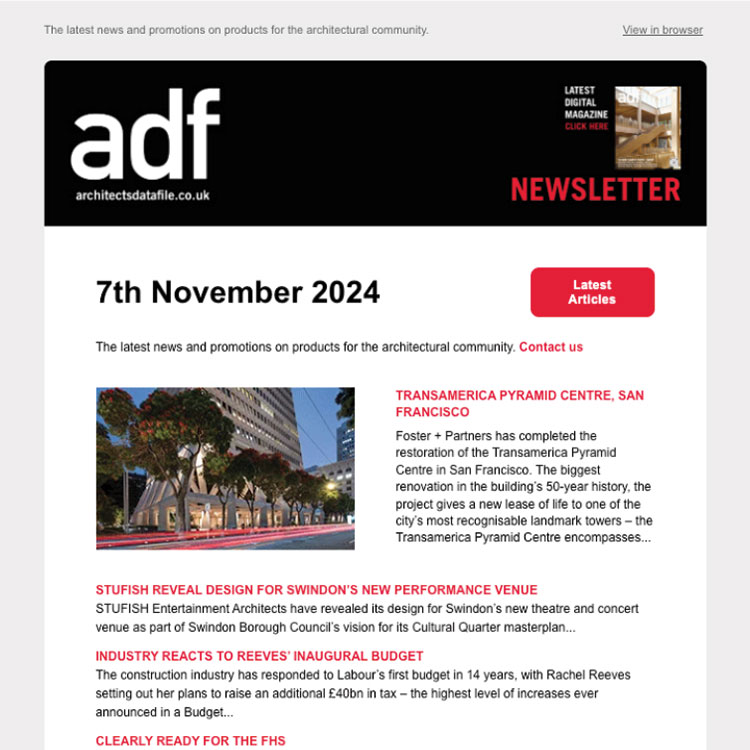For large scale, modern constructions, virtually anything is achievable in glass. Andrew Lake, Vetrotech UK general manager explains why selecting the right fire-rated glass system is therefore critical to the specifying process.
From the dizzying heights of the Burj Khalifa to the architectural feat of the Louvre Pyramid, architects and specifiers have consistently pushed the boundaries when it comes to delivering projects that are both visually stunning and defy the laws of what would have historically been deemed architecturally possible.
Where historic buildings such as the Ancient Egyptian pyramids would have taken 100,000 men to build over the course of 20 years, modern day architects are faced with a very different set of challenges in the form of building regulations and health and safety restrictions.
Though glassmaking reputedly dates back to 4000BC, the unique properties of glass were only first explored in the 1930s, and it was not until the 1960s that glass started to be used as a structural material. Today, architects are constantly challenging engineers to produce glass that is on a larger scale and that covers more complicated and diverse settings than ever before.
The number of building surfaces that are now covered with glass is rapidly evolving, with glass selection a critical stage of the specifying process. Glass characteristics and properties have to be evaluated, as well as structural and architectural capabilities. The Key Properties are:
• Strength
• Fire resistance
• Solar performance
• Acoustic insulation
• Thermal control
• Aesthetics
While sustainability is high on the agenda of both domestic and commercial developments, it is fire resistance that is becoming more widely specified in the commercial arena, and fire-rated glass plays a vital role.
From an aesthetics point of view, fire-rated glass may on the face of it look like many forms of non-rated glass; however most types of non-rated glass offer very little or no fire protection whatsoever. When subjected to fire, standard glazing is liable to shatter within seconds.
Fire-rated glass, which is rated based on a range of standard test times (minutes) of 15, 30, 60, 90, 120 and 180, is put through rigorous testing before being launched to market and can survive even in extreme temperatures. The higher the rating, the longer it will provide sustained resilience. It is designed to help prevent fire spreading from room to room, or to use the official term, limits fire damage via compartmentation to sustain the integrity of a building.
Due to technological advances in glass manufacturing it is also important to note that fire-rated glass comes in multiple forms, with each fire-resistant product offering differing characteristics and contrasting levels of fire protection. To ensure that the right fire-rated system is specified for the respective location it is imperative that you familiarise yourself with each available option and have evidence that any performance based testing that has been conducted demonstrates its compatibility for the chosen application.
The transparency of fire-rated glass also means that any smoke or flames can be quickly identified if fire breaks out and a suitable and safe evacuation of occupants within the building can be plotted out.
With the ravages of fire potentially endangering life and property, it is essential that each element of fire-rated glass is specified, selected and installed correctly to ensure that it does the job that it is intended to. Failure to do so can have severe repercussions due to inadequate product performance.
Wherever glass is specified within a commercial development, it must be used as part of a fire resistant glazed system including the glass, beading, fixings, seal and frame. Each of these products must have been fire tested and approved as compatible for use with each component within the system.
For large scale, modern constructions, virtually anything is achievable when specifying the glass. Where bespoke glass pane sizes are specified, manufacturers and suppliers are the first port of call to either confirm they have the appropriate test evidence to support the size and system specified, or to run the tests on the new size requested. Architects now have more freedom and flexibility than ever before when integrating large-scale glass within projects.
Recent landmark glazing installations, such as Forbury Place in Reading, have seen steel fabricators and glass manufacturers work together to develop systems that allow projects to cover more sides and storeys than ever before.
Fire-resistant glass panes on these new scales can also be butt jointed and concealed for the ultimate clean and crisp aesthetic finish. Structural support steelwork is often hidden beneath bespoke facades to complete the look and the introduction of robotic glass lifting machines allows further flexibility for glass of scale (size and tonnage) to be used within these modern buildings.
The sky really is the limit for today’s architects, with scale, style and safety all working together to deliver architecturally stunning and structurally sound buildings that, like the Ancient Pyramids, will be enjoyed for years to come.


